Mill Creek Dairy Farm: HASP Return on Investment
Region
Stearns County, Minn.Timeline
2019 - presentAudience
Dairy and row crop farmersConservation Story
Gregory has been intrigued by wildlife ever since he was a kid exploring the creek that ran around his family’s farm. Since he started farming, he has been motivated to use conservation practices to bring biodiversity back to the land. He also knows that traditional farming practices get nitrates into the water and he aims to adopt practices that improve nutrient application and water quality. He first experimented with cover crops in 2012 at the encouragement of his son. His continued commitment to conservation practices will leave the land more productive and naturally abundant for his children and grandchildren.
Practice Impacts
- Stacking slab: Gregory built a stacking slab to prevent leeching from manure into the groundwater. The stacking slab has capacity for more manure than he needs on his farm so he can supply manure to other farmers in the area.
- Minimal till: Gregory aims to reduce tillage as much as possible, using just one pass with a chisel plow and digger. The ground is somewhat rough, but still has the necessary soil-seed contact.
- Manure application and management: Using manure as fertilizer has improved soil health and allowed Gregory to reduce the use of herbicide and insecticide. He also notices that his soils don’t dry out as quickly and crops are less affected during a dry period.
- Cover crops: Gregory uses cover crops to hold the soil in place through the winter and grow feed for the cattle in the spring. He grows oats or winter rye and plants corn directly into the cover crop after harvesting.
- Filter strips, grassed waterways, and sediment control basins decreased the annual soil erosion by 0.16 tons per acres and increased the soil carbon score by 0.04 based on modeling assessments. “We are probably spending close to the same amount of money [as before adopting conservation practices] but we are getting more bang for our buck. We are getting nutrients [from manure] that you can’t get with commercial fertilizer.”
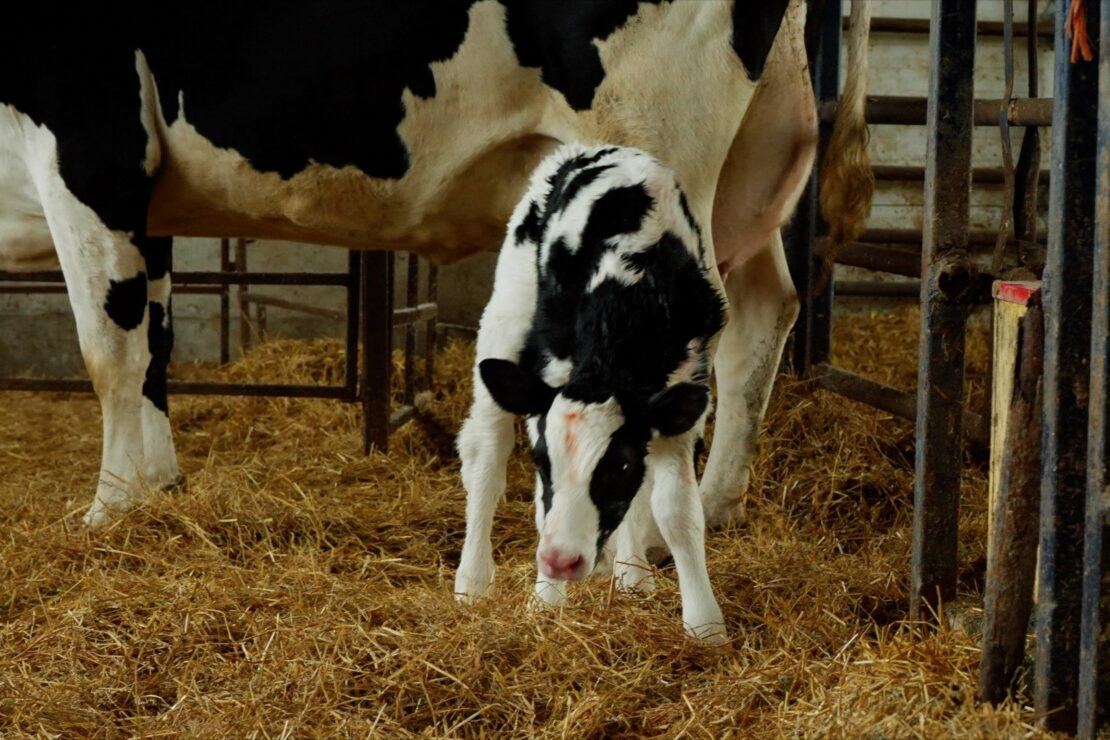
Farm Description
Tom Gregory milks 600 cows and farms 450 acres growing corn, alfalfa, and cover crops. He owns and rents the land which is spread over three farms.
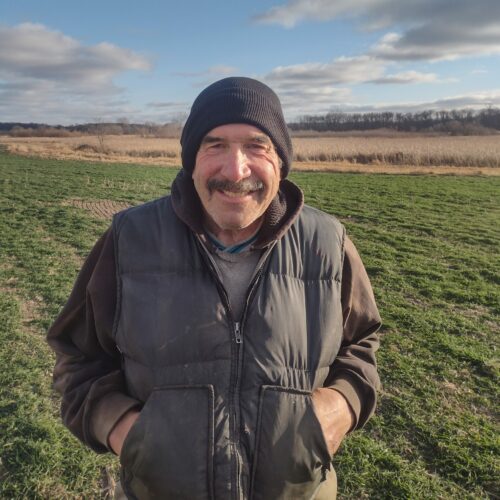
The wildlife is so abundant compared to when I started. We leave areas for them to nest, we leave areas for them to feed on. It shows.
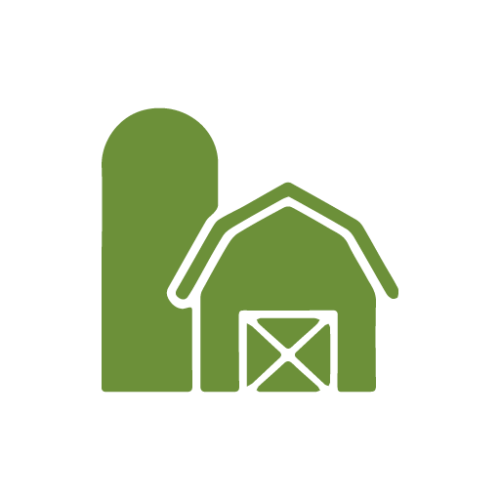
Stacking slab: Gregory built a stacking slab to prevent leeching from manure into the groundwater. The stacking slab has capacity for more manure than he needs on his farm so he can supply manure to other farmers in the area.

Minimal till: Gregory aims to reduce tillage as much as possible, using just one pass with a chisel plow and digger. The ground is somewhat rough, but still has the necessary soil-seed contact.
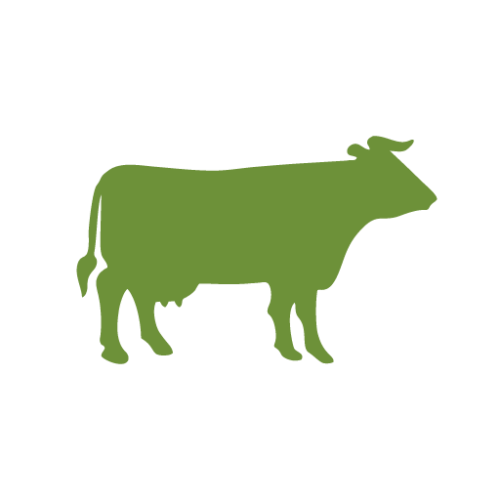
Manure Application and Management: Using manure as fertilizer has improved soil health and allowed Gregory to reduce the use of herbicide and insecticide. He also notices that his soils don’t dry out as quickly and crops are less affected during a dry period.
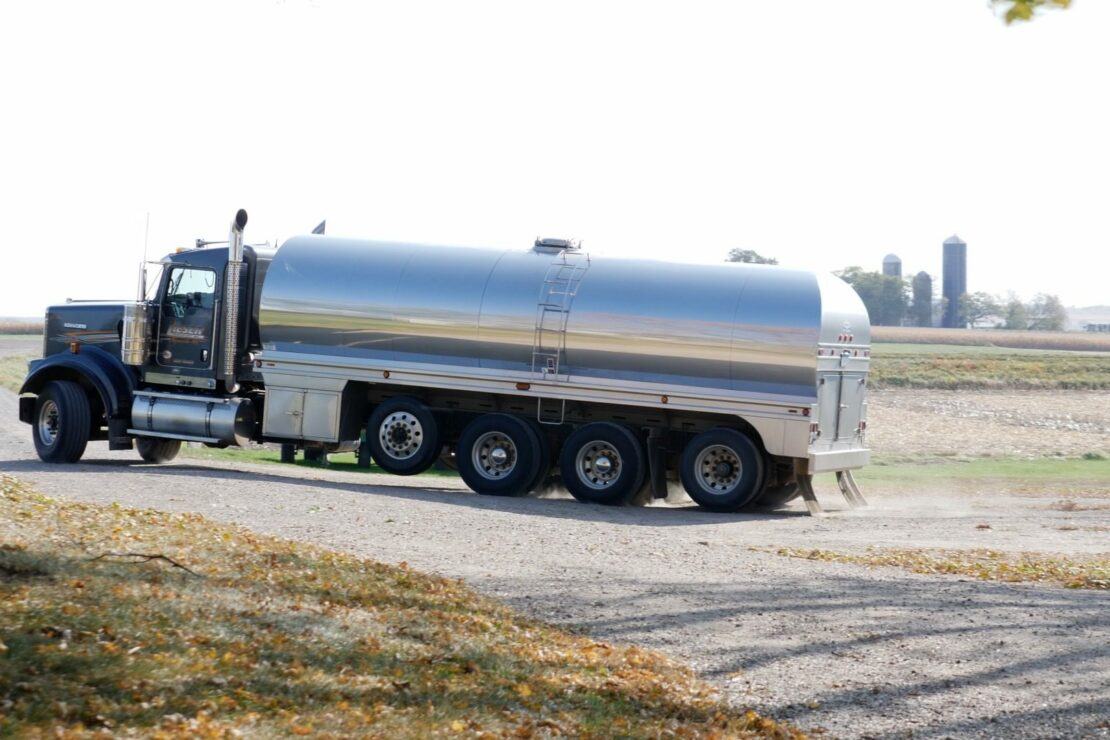
Moving into the Future
Gregory plans to continue using conservation practices and improving the soil health on his farm. He also predicts that precision planting that improves the accuracy of the guides we use for seeding and nutrient or pesticide application will help reduce waste and add efficiencies in the coming years.
Takeaways
- Gregory estimates that he spends about the same amount of money each season but gets more benefits using manure rather than conventional fertilizers.
- He recommends farmers new to conservation take a chance with 10 acres and talk to neighbors who are already testing these practices out.
What's New on the Farm?
Tom Gregory continues using rye as a cover crop – seeding 150 acres in 2022. Beginning in 2020, he hired a planter. They have expanded the no till work, which has been helped by having precise data on the corn fields. Planting rates based on precision data allows Gregory to make in-cab adjustments when putting in seed. He plans to soon install irrigation sensors and more efficient three-phase fans and lights to reduce electricity use in the milking shed.
Agriculture News
Report: Conservation practices benefit the environment and local farmer’s bottom line
A recent return-on-investment study of dairy operations in central Minnesota found that profitability and environmental stewardship are complimentary. The study analyzed 10 farms and found that on average the farms demonstrated improved environmental and financial outcomes compared to benchmarks.
Connecting farmers with nutrients to improve environmental and economic outcomes
MINNEAPOLIS – Protecting Minnesota’s water quality and soil health are priorities for the organizations and farmers in the Headwaters Agricultural Sustainability Partnership (HASP), a group administered by Environmental Initiative. The partnership was recently recognized for its local…
Our role in Minnesota’s Climate Action Framework
The Walz Administration has released their Climate Action Framework, a vision for how Minnesota will address and prepare for climate change. Mike Harley shares examples of Environmental Initiative's commitments to collaborative action.
HASP Return-on-Investment case studies
Schefers Brothers Dairy: HASP Return on Investment
The Schefer brothers joined the return-on-investment program in part to learn how their practices measured up against traditional practices. Learn more about their conservation journey.
Jer-Lindy Farm: HASP Return on Investment
The Jennissen family shares a dream that Jer-Lindy farm can sustainably support Redhead Creamery production growth. Explore how they are working to achieve that vision.
Kuechle Dairy: HASP Return on Investment
The Kuechle siblings operate a third-generation dairy farm, plan to add cover crops into their rotation, and want to learn more about resources from partners and other farmers in the HASP return-on-investment program.
